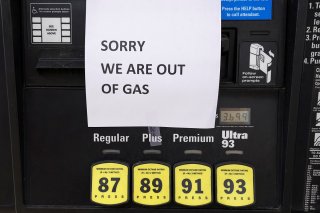Gas Price Update: When Will Prices Go Down?
AAA reported Monday that the national average gas price is $3.045. That’s higher than the $2.967 average from a week earlier, the $2.870 price from a month ago, and the $1.877 average a year ago, although that price was unusually low in the opening months of the pandemic.
Earlier this month, following the ransomware attack on the Colonial Pipeline that knocked that pipeline offline, it created a crisis of higher prices, lines, and closed gas stations that reminded many observers of the late 1970s.
Late last week, the pipeline was back online, although there were warnings that a return to normalcy in regard to prices would not happen overnight.
AAA reported Monday that the national average gas price is $3.045. That’s higher than the $2.967 average from a week earlier, the $2.870 price from a month ago, and the $1.877 average a year ago, although that price was unusually low in the opening months of the pandemic.
AAA also said that customers in the Southeastern United States have become to see some “relief”
“The restart of the pipeline is very positive news for motorists,” Jeanette McGee, AAA spokesperson, said in a blog post last week. “While impact won’t be seen immediately and motorists in affected areas can expect to see a few more days of limited fuel supply, relief is coming. Station pumps will be full of fuel in several days. This is an especially good update ahead of the Memorial Day holiday.”
As of Monday, prices in every Southeastern state were actually lower than the national average, with no state in the Southeastern quadrant of the country posting gas prices over $3.
California, with an average price over $4, had the highest average gas price in the country on Monday. However, City News Service reported late last week that Los Angeles County had ended a 21-day streak of rising gas prices, when the price dropped one-tenth of a cent.
Last week, per GasBuddy’s weekly survey, the average gas price in the U.S. exceeded $3 for the first time since 2014. However, that site said that the increase was more a function of rising demand and the return to post-pandemic normalcy than anything else, and that price records were unlikely to be broken this summer.
“While many Americans are pointing fingers, they should be pointing at the same factor GasBuddy mentioned months ago: COVID-19 related recovery is pushing things back to normal and leading to rising gasoline demand,” GasBuddy said last week.
“While this is not a milestone anyone wants to celebrate, it’s a sign that things are slowly returning to normal,” Patrick De Haan, head of petroleum analysis at GasBuddy, said in a blog post last week.
“In this case, rising gas prices are a sign Americans are getting back out into the world — attending baseball games, going to concerts, taking a road trip — basically staying anywhere but at home. This summer may see some blockbuster demand for fuel as well, as Americans find it very challenging to travel internationally, leading many to stay in the confines of U.S. borders, boosting some weeks to potentially record gasoline demand,” he added.
Stephen Silver, a technology writer for The National Interest, is a journalist, essayist and film critic, who is also a contributor to The Philadelphia Inquirer, Philly Voice, Philadelphia Weekly, the Jewish Telegraphic Agency, Living Life Fearless, Backstage magazine, Broad Street Review and Splice Today. The co-founder of the Philadelphia Film Critics Circle, Stephen lives in suburban Philadelphia with his wife and two sons. Follow him on Twitter at @StephenSilver.

